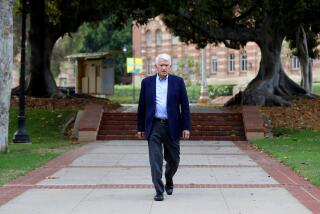Backup Plan Drafted to Slow-Growth Initiative
While Orange County residents have been deciding how they will respond to the slow-growth initiative on the June 7 ballot, an 11-member citizens advisory committee appointed by the Board of Supervisors has been writing a nearly identical plan that could be used to manage growth if the initiative fails.
After nearly three months of meetings, the supervisors’ ad-hoc advisory committee on county public facilities and growth management has reached tentative agreement on levels of service for roads and intersections that are virtually the same as those in the Citizens Sensible Growth and Traffic Control Initiative, listed as Measure A on the June 7 countywide ballot.
One key difference, however, is that panel members have agreed to recommend a funding source, probably a sales tax, to help pay for the improvements that would be needed to offset congestion caused by new development. The initiative would set up special trust funds for improvements but does not say anything about who would pay into them.
Unexpectedly, committee members representing the development industry so far have gone along with the plan, which could be changed later by either the county Planning Commission or the Board of Supervisors.
“It’s 90% of what’s in the initiative,” Norm Grossman, a panel member and initiative supporter said of the committee’s back-up, or so-called “safety-net” plan. “In some respects, it’s even tougher.”
“I would say overall it’s a very tough management plan,” said John Erskine, executive director of the Building Industry Assn. of Orange County and mayor of Huntington Beach. “I think the majority of people in our industry realizes that we’re not ever going to be able to play by the same development processing rules that we had during the 1950s and 1960s. The pendulum will swing back some day, but until it does, we have to do something to restore public confidence.”
A major component of the plan would set up separate community planning zones, called growth management areas, throughout the county. Traffic and other factors would be closely monitored to ensure adequate levels of public services for each area.
And at the committee’s meeting Thursday night, members quickly agreed to use the initiative’s standards for fire and paramedic service--new development must result in responses within five minutes, in 85% of all emergency calls.
The panel agreed that developers should not be allowed to proceed from one phase of a major project to another phase until the required roads and public facilities are constructed.
The committee also intends to develop a restrictive policy on use of development agreements--contracts that give developers guarantees to build their projects in exchange for their commitment to pay for roads and other public facilities.
More to Read
Start your day right
Sign up for Essential California for news, features and recommendations from the L.A. Times and beyond in your inbox six days a week.
You may occasionally receive promotional content from the Los Angeles Times.






